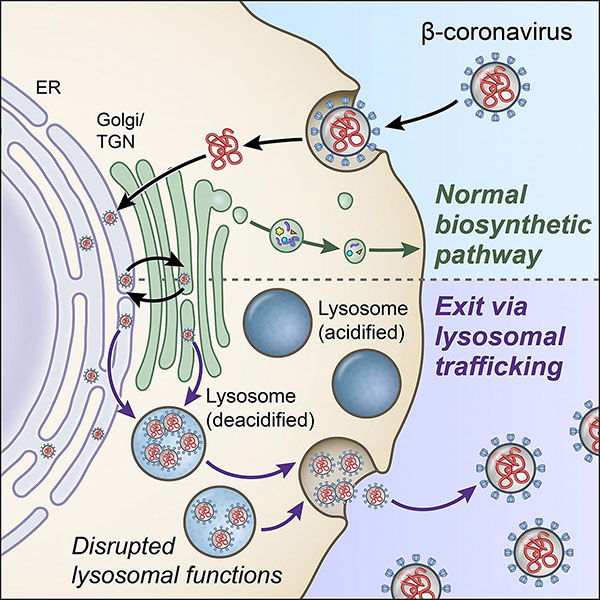IRP scientists discover key pathway in lysosomes that coronaviruses use to exit cells
Targeting cells’ ‘trash compactor’ could lead to new antiviral strategy to fight COVID-19
Researchers at the National Institutes of Health have discovered a biological pathway that the novel coronavirus appears to use to hijack and exit cells as it spreads through the body. A better understanding of this important pathway may provide vital insight in stopping the transmission of the virus — SARS-CoV-2 — which causes COVID-19 disease.
In cell studies, the researchers showed for the first time that the coronavirus can exit infected cells through the lysosome, an organelle known as the cells’ “trash compactor.” Normally the lysosome destroys viruses and other pathogens before they leave the cells. However, the researchers found that the coronavirus deactivates the lysosome’s disease-fighting machinery, allowing it to freely spread throughout the body.
Targeting this lysosomal pathway could lead to the development of new, more effective antiviral therapies to fight COVID-19. The findings, published today in the journal Cell, come at a time when new coronavirus cases are surging worldwide, with related U.S. deaths nearing 225,000.

Illustration shows components of the lysosome exocytosis pathway, which coronaviruses use to exit cells. Also shown are components of the normal biosynthetic secretory pathway. Image credit: NIH Medical Arts
This page was last updated on Friday, January 21, 2022